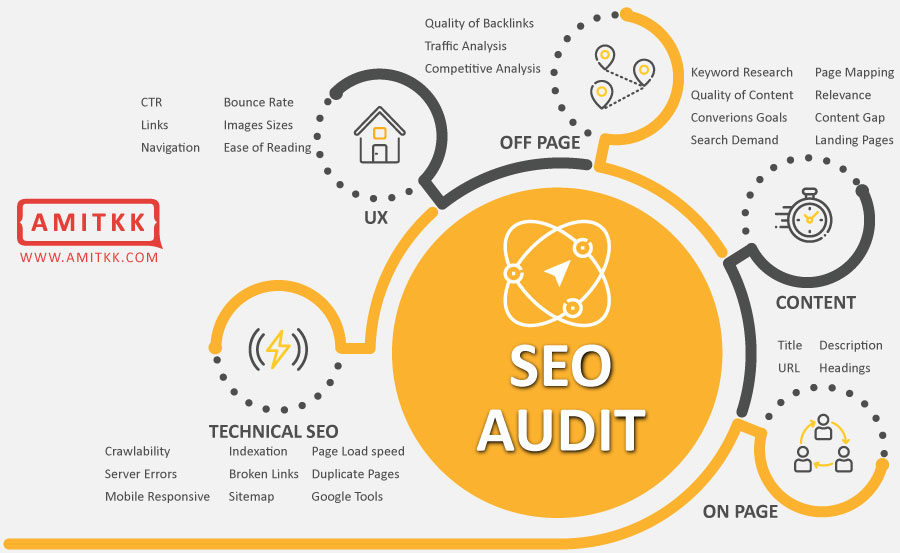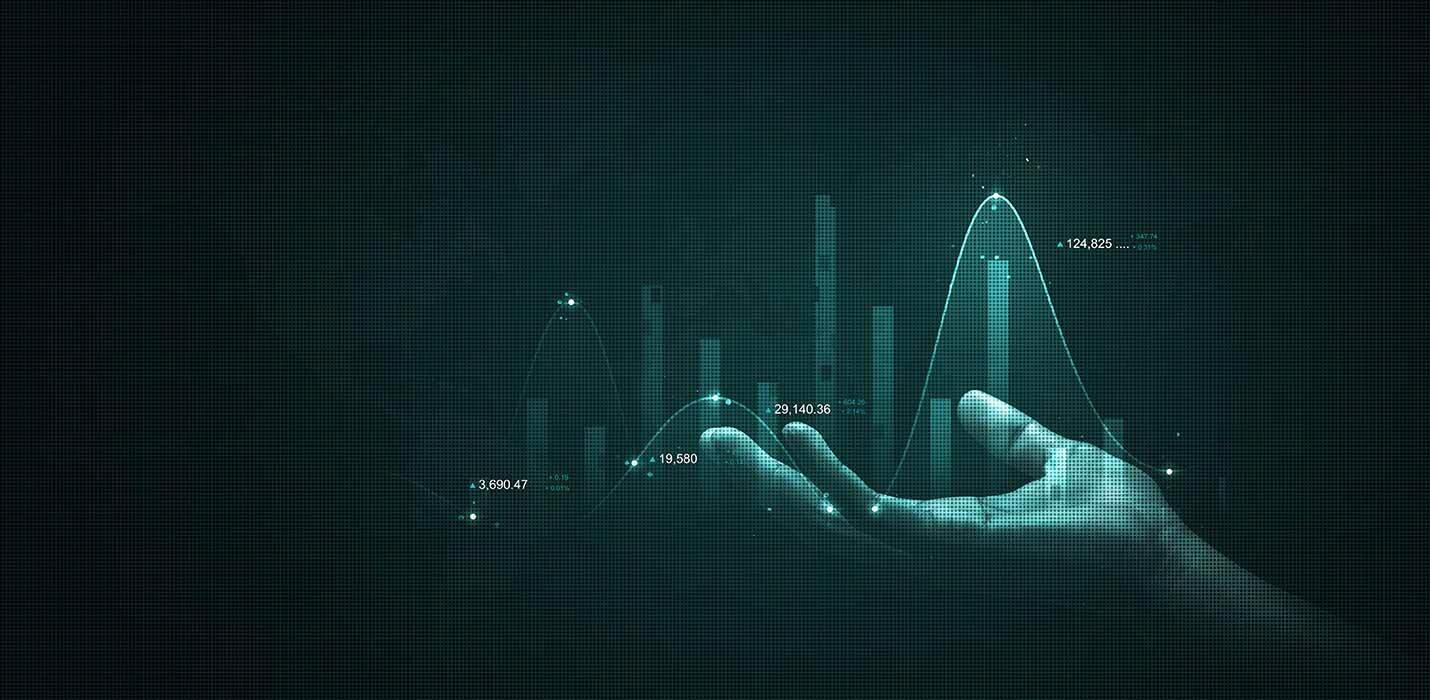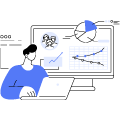Developing an eCommerce website is easy with the many languages and frameworks available. Once the website gets deployed, you start promoting the same. Businesses start by calling friends and family or sharing in social groups to realize they are not getting enough traffic on the website. Of all the channels you utilize for marketing, organic SEO is the most important one. We will not discuss other channels in this article but will focus on getting results through SEO.
The real test of the website lies in ranking it on targeted keywords. Everything from aesthetics, framework, server, and your digital marketing strategy boils down to SEO in the long run. To convey our point further, let’s dive into the article.
Importance of SEO for eCommerce Website
SEO is the most important of all the channels to market an eCommerce website. The ROI you get through SEO beats all other channels by leaps and bounds. Implementing a successful eCommerce SEO strategy lets your products rank higher than your competitors. SEO leads to increased traffic and eventual business, which is sustainable for a long time.
Other channels like paid campaigns or social media marketing stop giving results once you stop adding budget. SEO, On the other hand, gives you results for a very long time. It helps you get ranked on search engine results from where you get steady traffic to your website. The purchase intent of searches on the search engines is pretty high, which improves the conversion rate.

Benefits of SEO for eCommerce sites
SEO helps you reach out to new customers and helps your acquisition. Let’s look at broad points about SEO for eCommerce sites.
Search Visibility
The site's search visibility increases as you target a huge number of potential customers looking for your product. It is independent of your marketing budget and geographies and has the same effect across all search engines.
This search visibility is something you aim for through paid campaigns and social media marketing which costs you tons of money.
Brand Development
With search engine rankings, your brand becomes more familiar to users, and you build on your brand development activity. The top-of-the-mind recall is what you primarily aim for in brand-building activity. Your brand name gets recalled and starts sounding more familiar to build credibility.
An offline activity like an advertisement on television or radio for a week costs more than what you might spend on SEO. In brand-building activity, you will get more mileage digitally than through any offline activity.
Reduced Marketing Budget
SEO reduces your marketing budget by a good rate. Within 3-4 months, you will see a decrease in the budget required for ad campaigns and customer acquisition costs. It happens due to the ranking you get on search engines leading to a rise in visibility and traffic. SEO reduces your dependency on other channels that are way more expensive and have a lower ROI.
Pull vs. Push Strategy
Push strategies wherein the products and services are taken to customers tend to be more expensive. Ad campaigns on search engines, social media platforms, and offline events are some push strategy examples. The approach here is to reach out to clients and pitch in for your product or service. The product is pushed to the client as a marketing strategy.
Pull strategies wherein the clients themselves come seeking the product through various channels. The client pulls the product. Searching on search engines is one such pull strategy. SEO is the best pull strategy where users know what they are looking for and are convinced to a great extent.
Purchase Intent
Users' purchase intent and probability of buying are high when they come to your site through SEO. It is because they are actively looking for your product or service and have taken the next steps required in making the purchase.
Other channels, like ads and social media marketing, take your product to customers but lead to lower conversion as the purchase intent is missing. It leads to good brand building as the top-of-mind recall is impacted by regular visibility. With a latent purchase intent, the sales conversion may not happen.
Long Term Benefits
SEO has long-term benefits that keep giving results even after you stop working on them and are independent of your media budget. Other marketing channels are short-term, and the results stop when the media budget is stopped.
The eCommerce pages stay visible on searches for a long time and go down the rankings very slowly.

Keyword Research for eCommerce SEO
The first step in the SEO of any website is keyword finalization. Every product will have a primary keyword and many Latent Semantic Index (LSI) keywords. LSI keywords are the keywords that are closely related to the primary keyword. Let’s get into things that shape keyword finalization in eCommerce.
Finding Keywords
Finding and finalizing keywords is the most crucial stage, as your SEO team will be chasing these keywords in the coming months. A wrong decision at this stage will lead to months of effort going to waste. Take higher traffic, and lower competition on the keywords into account while finalizing them.
There are lots of ways, both free and paid to find keywords. Some of these options are:
Google Suggest
Type the keyword in the Google search bar, and you will get a list of keywords that users have used looking for the product. Once you click on any search, Google shows more keyword ideas at the bottom and questions asked in between. They form a good starting point for finding keywords and creating page content.
Google Keyword Planner
Use Google keyword planner for keyword research. The list provided by this wonderful online tool also has both monthly and annual traffic, Generic cost per click bid, and competition, among other highly useful data.
Good keyword research will give you better results.
Online Tools
Many online tools like Uber Suggest, Keyword anywhere, and Semrush provides keyword ideas. You can subscribe to these tools and expand your keyword search. These tools also provide competition research where you can check the keywords they currently rank on.
The tools can be expensive but bring many benefits to your marketing strategy.
Short-tail and long-tail keywords
Short tail keywords are the ones that are short in length, like ‘e-commerce SEO.’ Achieving search engine ranking on these short-tail keywords requires more time and effort than on long-tail keywords. It is because the short-tail keywords are generally part of long-term keywords too. Also, the approach for short-term keywords is different than for long-term keywords.
Long-term keywords are longer and can be more expressive than short-tail ones. Getting ranked on these keywords is easier than short-tail ones.
According to Google, 15% of queries are new and have never been seen. Long-tail keywords drive more than 40% of searches and tend to convert faster than the short-tail.
Mapping to Pages
Once you have finalized the keywords and their respective LSI keywords, you need to map them to specific pages. It will help you prepare content accordingly and avoid internal competition and overlapping efforts.
While mapping the keywords, avoid highly competitive keywords as they will take more time and effort to achieve and will be very frustrating. Instead, focus on the long tail and less competitive keywords initially. These keywords are more expressive and have a high search intent leading to a good conversion probability.
Site Architecture for eCommerce Websites
The thumb rule to having perfect site architecture for any eCommerce site is to have no more than three clicks for a user to reach the product page from the home page. A flat site architecture facilitates this as the user can reach the product page faster.
A deep architecture will take more clicks for users to reach the product page, and the probability of sales conversion decreases exponentially. The users would give up on the website and move on to other websites offering similar products or services.
User Flow
E-commerce websites have a specific user flow in them. You should ensure they can add and edit products to the cart and check out seamlessly.
Allow room for adding and using coupons and offers in the cart, and all the payment methods, like cash on delivery, and a credit card, are easily available. Any difficulty the user finds in checking out can impact your sales. Get your eCommerce website checked and reviewed by industry experts to validate the user flow.
SEO for eCommerce Website
After we have keywords finalized and mapped to pages and the site architecture is sorted, it’s time to implement the SEO. SEO can be broadly classified into on-page SEO and off-page SEO.
On-page SEO for eCommerce websites
All SEO activities that we do on our site are called on-page SEO. This part holds a lot of weightage in the SEO compared to the off-page part.

URL Optimisation
The URL structure should be easy for search engines to index. Some points to be considered in URLs are:
- Avoid capital letters in URL
- Keep them short
- Keep them meaningful and not like system generated
- Avoid numbers unless they are related to the user’s requirement
Keeping your URL optimized right from the start will help you not to change them and use a redirect in the future.
Meta Tags
Write beautiful and compelling titles and descriptions for users to click on the site when they see it in search results. Include keywords in the Meta tags as they appear bold in searches making them stand out from the competition.
Keep the length of the title around 50-60 characters while the description has 150-160 keywords.
You can add your store name at the end of the title to help users identify the brand name easily.
Alt Images
Images bring life to the website, but they come at the cost of page speed, as images can be heavy. They take up lots of bandwidth space and should be used judiciously.
To improve user experience, lazy load images below the fold. This feature allows the page to load above-the-fold content for users to consume and then, in the background, loads the remaining resources. Google page speed tool will explicitly ask you to do this when you inspect the page.
Provide width and height data to improve the cumulative layout shift of the website as measured by search engines. Also, using differently sized images for website and mobile versions will be a good idea.
Quality Content
Write well-researched and articulated content keeping the primary and LSI keywords in mind while writing content. The content should have benefits, usage, offers, and pricing laid down clearly to help users purchase. The content should be deep, and you should use at least 1000 words on every page.
The use of infographics should be encouraged as they convey lots of meaning while increasing user engagement time.
FAQs Section
We should add FAQs on each page as they help answer questions users may ask. They also make you stand a chance of getting covered and featured in Google snippets.
Video Content
Videos majorly affect how users look for and make shopping decisions. You can place these videos on YouTube and use the iframes on product pages.
However, using iframes can increase page speed, and you should open these videos in modals rather than on-page itself.
Internal Linking
Link pages on keywords for users to browse easily. These internal linking helps Google find new pages and build an uplink profile that helps in SEO. Ensure the links on the website are not broken.
Use tools like screaming frog, Link Miner, and Semrush to check for errors on your site and improve them.
Schema Mark-up
Schema markup is like yellow pages for your website that help search engines to categorize information. This schema markup is displayed in search engines, and leveraging them will be a good idea.
Always deploy the schema through Google Tag Manager to keep your code clutter-free. Generating schema markup requires a good knowledge of schema and coding. We provide these services for free in the admin panel of the websites we build.
Product Reviews
You should ask your customers to write genuine reviews and rate your products. These reviews help in boosting the credibility of the products and help in sales conversion. The product reviews are also visible through schema in search engine displays. Also, new text gets added to the pages through these reviews keeping the content fresh consistently.

Out of-Stock Products
Some products might be out of stock or not currently available on the website. These need to be handled in a way that turns the user’s disappointment into happiness.
Not displaying the pages or directing the user to the 404 page or any other page is not a good idea. Removing access to these pages will also remove the internal links placed earlier and bring down the SEO results. You should continue displaying the page and maybe not take orders and display the stock message. You can also take advance orders on these products and provide additional discounts on the delivery time.
Local SEO
Local SEO uses geographical proximity in SEO and brings traffic to your store, where you can close the sale. Physical visits also help build a strong relationship with customers, boosting loyalty and long-term sales.
Use geography-focused keywords like – eCommerce SEO agency in Delhi, top eCommerce marketing company in Delhi, etc. It helps users looking for a nearby service provider to find you and connect for further sales.
Off-Page SEO
Off-page SEO includes all activities and steps taken on someone else’s website. The steps help in link building so that search engines consider ranking the website.
Not just the quantity of links but also the quality and relevance of links are to be considered. Links built on high DA, PA, and low spam score websites hold more weightage for SEO and increase the DA PA of your site too.
There are many off-page activities that you can use, like image posting, bookmarking, classified submission, pdf submission, etc. We are not going into these activities individually but will focus on key ones.
Affiliate Marketing
You can tie up with affiliate marketing agencies or influencers to help in sales. They have a system and show your product or service on their site. It helps in link building and also sales.
The rates charged by these affiliate marketers are generally high but help you find and connect with new users that you might not be able to do on your own.
Guest Blogging for SEO
Guest blogging is a good step to building a brand and backlinks. Find bloggers who work in the same sector as you are and connect with them to publish guest blogs. These bloggers charge some money to publish these guest blogs.
You can get referral links through Guest blogging that helps in ranking.
Social Media Marketing
Posting on social media also helps in off-page as they create no-follow links. Not all links in the link profile need to do follow, and some no-follow is also required. These social media posts help in building these no-follow links.
You can also approach influencers on social media and ask them to endorse your product or service. These influencers have a good following around them and know the industry or sector in depth. Please ensure the influencers have a following in your sector before you finalize them for marketing.
We are not diving deep into social media, as this article focuses primarily on SEO.
How does AMITKK help you in eCommerce SEO?
We have the best eCommerce SEO experts available in the industry who deliver guaranteed ranking quickly. Our SEO strategies are custom designed per the sector and the products with room for continuous improvement and correction. We share monthly reports at the month's end that cover the activities done, results achieved, and the plan for the next month.



















 Seo Company In Delhi
Seo Company In Delhi  Ecommerce Website Development In Delhi
Ecommerce Website Development In Delhi  Local Seo
Local Seo  Ecommerce Seo
Ecommerce Seo  Technical Seo
Technical Seo  Seo Company In Gurgaon
Seo Company In Gurgaon  Seo Company In India
Seo Company In India  Seo Company In Bangalore
Seo Company In Bangalore  Seo Company In Ahmedabad
Seo Company In Ahmedabad  Seo Company In Jaipur
Seo Company In Jaipur  Free Website Analysis
Free Website Analysis 




